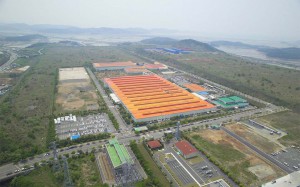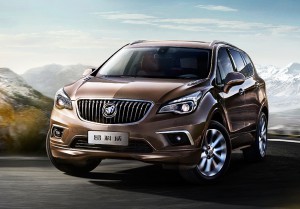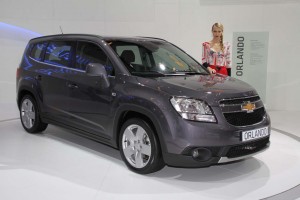Facing rising costs and declining sales, General Motors today said it will close one of four factories in South Korea and, as part of an ongoing restructuring program, the automaker is weighing the fate of the remaining three facilities.
South Korean government officials expressed “deep regret” at the news. The country’s trade minister left open the possibility of financial aid but cautioned that any assistance will depend on whether GM plans to invest in its operations in Asia’s fourth-largest economy. But it appears all sides are playing a game of brinksmanship, the U.S. automaker waiting to see what stakeholders, including its unions, might be willing to offer.
“As we are at a critical juncture of needing to make product allocation decisions, the ongoing discussions must demonstrate significant progress by the end of February, when GM will make important decisions on next steps,” Barry Engle, GM executive vice president and president of GM International, said in a statement.
The decision to close the Gunsan plant, located about 120 miles from the South Korean capital of Seoul, will result in an $850 million charge, GM said, including $375 million in termination benefits for its 2,000 employees. The factory operated at barely 20% of its capacity last year, building both the Chevrolet Cruze sedan and the Orlando SUV.
(High costs, sliding sales pummel earnings at Hyundai. Click Here for the results.)

GM says it will consider the fate of its remaining three Korean plants, including this one in Boryeong.
GM has had a tempestuous relationship with the Korean auto industry since first entering the market three decades ago. It initially formed a joint venture with the domestic manufacturer Daewoo, breaking it off due to deep divides between the management of the two companies. But when Daewoo went bankrupt during a severe Asian economic crisis General Motors moved in to buy its assets, eventually renaming the subsidiary GM Korea.
GM saw the acquisition as an opportunity to produce both for the booming Korean domestic market while also exporting vehicles to the U.S. and other markets with high labor costs. Last year, the company sold 132,377 vehicles in Korea and exported another 392,170 cars and crossovers to 120 other countries.
But aggressive labor unions, combined with weak local sales and other factors have forced GM to rethink that strategy. From 2014 through 2016, the maker has run up $1.8 billion in net losses in Korea.
GM hasn’t said what it is demanding from its unions but is believed to be looking for some form of concessions that could include improvements in productivity and even limits on future wage increases. What is clear is that it wants answers immediately,
“Time is short and everyone must move with urgency,” GM President Dan Ammann told the Reuters news service.

GM could turn to China -- where it builds the Buick Envision -- as an export base if it can't bring down costs in South Korea.
Adding to GM’s ammo, the automaker can point to other moves it has made since CEO Mary Barra came onboard four years ago. It has shut down its manufacturing operations in Australia, abandoned its retail network in India, walked out of the Russian and South African markets, and sold off its European Opel/Vauxhall subsidiary to France’s PSA.
Details of discussions with the Korean government have not been disclosed, but Trade Minister Paik Ungyu told reporters that, “Any support to GM Korea depends on the content of its new investment.” The government, he added, “cannot commit to financial aid when it’s unclear how much, and for how long, the company will invest.”
(GM sales surge in China, even as Ford’s fall. Click Here for the latest.)
There are several challenges for Korea as it looks to maintain its position as a global automotive manufacturing powerhouse. Many of the vehicles currently produced in the market, such as the Chevy Cruze, are small passenger cars facing a worldwide shift away from sedans to SUVs and CUVs. Even with the crossovers now being built in Korea margins are small, making them particularly sensitive to rising labor and other costs.
And then there’s Asia’s 800-pound gorilla. Until recently, China’s car plants focused on that country’s own, seemingly insatiable growth. But with sales slowing, manufacturers are now beginning to target export opportunities. Volvo was the first to ship vehicles from China to the U.S., GM following with the Buick Envision utility vehicle. Korean government and labor officials can’t escape the role China will play as they try to negotiate any deal with GM.
(Carlos Ghosn wins OK to name his successor at Renault – but comes under pressure to merge Renault and Nissan. Click Here for more.)

